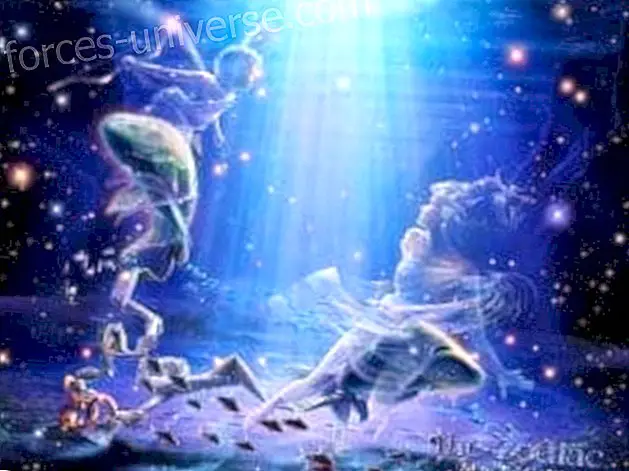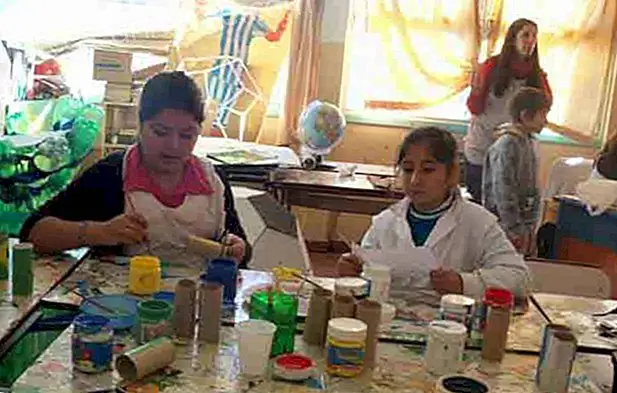INNOVATION COURSE Unit 2: Technologies. Learning Object 5: Telematics
A "medium" is in the strict sense, a transmission agent. Modern use appropriated the meaning of media. Although we now consider the book or the press as media, the term took effect with the emergence of long-distance communication through technology or telecommunication. Today we consider the media as the mass instances of communication, whether it be the press, radio and television in their public, private or community terms. These are mechanisms that allow the mass dissemination of information by facilitating the construction of social consensus, the construction and reproduction of public discourse and certain levels of interaction, mainly of the new independent, alternative and community media.
The recent digital revolution comes to question the media, regarding its own definition, and redefines its role in completely unpublished terms, placing them in an "information society" that strives to delimit. The relationship between the media and the information society effectively poses a seemingly paradoxical challenge. On the one hand, the mass media live a process of concentration of property and horizontal and vertical integration of sound, audio and image thanks to the advent of numerical support. On the other hand, the Internet and digital support in general individualize and democratize access to communication and interaction, allowing the unprecedented development of new alternative or cooperative media that affect traditional mass media at the same time.
Telematics covers a considerable scientific and technological field, encompassing the study, design, management and application of communications networks and services, for the transport, storage and processing of any type of information (data, voice, video, etc.), including the analysis and design of technologies and switching systems. Cyberculture was born thanks to the use of new information-communication technologies and the use of the computer for communication, entertainment and electronic marketing.
OBJECTIVES
- Establish relationships between technology, culture and information.
- Establish differences between the types of telepathy.
- Understand telepathy from a telecommunication model.
RULE TWELVE
Let the group serve as Aquarius indicates; Mercury hasten the group on the Ascending Path; may Taurus bring enlightenment and obtain vision; that the mark of the Savior, as the group strives in Pisces, be seen above the aura of the group.
INTRODUCTORY ACTIVITY: from tourism to communication
Roarke is the host of an Island who has strict moral code, but always benevolent, tries to make his guests see an important lesson of life through his desire ( although this is the last of his life). Fantasies sometimes include a risk to the visitor's life, but Roarke always comes to the rescue at the end. At the time of the arrival of the seaplane the island the guests disembark and Roarke explains to Tattoo the fantasy of each one of them as well as that things would not always go as expected. They were subsequently welcomed. Except for some occasions, visitors were never allowed to stay on the island once their wishes were fulfilled. Fantasy Island is a television series from 1977.

Will, Riley, Capheus, Sun, Lito, Kala, Wolfgang and Nomi. They are from different cultures, races and sexual orientations who after experiencing the tragic death of a woman through visions or dreams, are mentally and emotionally connected. Through this connection, they are able to communicate, feel and share their knowledge, languages and skills. While they try to discover why they are connected and what their connection means, they receive help from a mysterious man named Jonas, who is another sensible one. Whispers uses the same telepathic power that the protagonists possess to enter their minds, invading their thoughts and emotions. The eight main characters are called "sensible" (senseight) and share the same day of birth: August 8, under the sign leo. In turn, he explores his life in each of his cultures and countries as well as his sexuality. Sense8 is an American science fiction web series that tells the story of these eight strangers, was produced by Netflix and created, written and directed by the Wachowski Sisters. Years 2015-2018.
- After watching the television series The Island of Fantasy and Sense8 answer the following questions. What is the difference between desire and will? Why are imagination and fantasy valuable for the development of intuition? What relationship do they find between the three methods of telepathic work, their three realization techniques and the three main forms of communication?
Instinctive telepathy, train travel, stations, telegraph.
Intellectual telepathy, sea travel, ports, telephone.
Intuitive telepathy, air travel, airports, television.
ACTIVITY ONE: The telegraph
“To the beat of the chacachá, of the chacachá of the train, what pleasure to travel when it goes in express. Well, it seems that love with its sweet swing produces more heat than the train chacachá. ” EL CHACACHÁ DEL TRAINThe railway is, without a doubt, one of the most important, significant, and vital forms of transport, due to the impact it has had throughout the history of mankind, since its most primitive and initial version in the times of his invention, until the industrial revolution, thus helping to transport crowds of people. The first locomotive was built in 1814. The railways need a lot of engineering, including bridges, tunnels and viaducts. It concerns navigation to determine your own position and direction within your destination route. The first requirement of a moving ship is to find out its position and check if it follows the marked route.
Telegraphy was the first truly modern means of communication, followed quickly by telephony, radio, television, cable and satellite transmission, and of course the Internet. All this development occurred in the last 150 years, most during the last century, with internet in the last decade. The telegraph is the device that uses electrical signals for the transmission of coded text messages, as with the Morse code, via wired lines or radio communications. The electric telegraph, replaced the systems of transmission of optical signals of traffic lights, thus becoming the first form of electrical communication.
The device that was successful and practical at the same time was the so-called teletype created by Canadian inventor Frederick G. Creed, based on the idea of creating a typewriter-like device that would allow the operator to punch Morse code signals in a paper tape, pressing the appropriate character on the keyboard. He then acquired a typewriter which he modified to create a punch keyboard, which used compressed air to punch the holes in a paper tape. He also created an reperforator (reception punch) and a printer. The reperforator punched the incoming Morse signals onto the paper tape and the printer decoded this tape to produce alphanumeric characters on ordinary paper. This was the origin of the high-speed Creed automatic printing system, which could operate at an unprecedented 200 words per minute. Thus he started his own company, called Creed & Company in 1904. His system was adopted by the English newspaper Daily Mail for the daily transmission of journalistic content. Subsequently, it would also be adopted by other press agencies.
- Write an article about what you understand by vibration in a technological context.
ACTIVITY TWO: The phone
They tell me the seven seas because I walk from port to port, carrying with myself a love almost dead. I would like to stay close to my great love, but that was not my life, sailing is my destiny. THE SEVEN MARESA cruise is a type of passenger ship for pleasure trips to any part of the world, being a unique, different and special form of tourism to know countries that are unexplorable through other means of transport. When the first cruise advertisement appeared in the newspaper in 1835, no one foreshadowed such a success in the 19th century. Currently, cruises are considered one of the most emerging tourism sources. Among the more than 2, 000 existing destinations, these could be classified according to their geographical location and places of visit in sea and river.
The expression seven seas refers to a group of seas (real or mythological) of Eurafrasia. It was used (and used) both to refer to a specific set of seven seas and to the set of seas in the world known at that time: the Persian, the black, the Caspian, the red, the Mediterranean, the Adriatic and the Arabian . At present, much media influence has led to changing the meaning of the phrase to adapt the 7 Seas to the entire world; dividing the oceans like this: Arctic, Antarctic, North Atlantic, South Atlantic, North Pacific, South Pacific, and Indian. Rivers can be modified for commercial navigation by dredging and straightening, or a channel can be opened to shorten part of the course of a river.
But while the channels were used for transport by ships, the cables were used for communication. With regard to the telecommunication service, the first cables, destined for the telegraphic service, were formed by copper wires covered with an insulating material called gutta-percha, a system developed in 1847 by the German Werner von Siemens. With this system, the first submarine cable linking the United Kingdom and France through the English Channel was built in 1852.
The telephone is a telecommunication device designed to transmit acoustic signals remotely by means of electrical signals. Since its original conception, successive improvements have been introduced, both in the telephone system itself and in the methods and systems of exploitation of the network. With regard to the telephone itself, several things can be pointed out: The introduction of the carbon microphone, which considerably increased the emitted power, and therefore the maximum range of communication. Pulse dialing using the so-called dial disk. Touchtone dialing. The introduction of the electret microphone, condenser microphone, practically used in all modern devices, which considerably improves the sound quality. A fax is the telephone transmission of printed scanned material (both text and images), usually to a telephone number connected to a printer or other output device. The original document is scanned with a fax machine, which processes the contents (text or images) as a single still graphic image, converting it into a bitmap, the information is transmitted as electrical signals through the telephone system.
The mobile phone is a portable telephone that can make and receive calls through a radio frequency carrier, while the user is moving within a telephone service area. The radio frequency link establishes a connection with the switching systems of a mobile telephone operator, which provides access to the public switched telephone network (PSTN). Most modern mobile phone services use a cellular network architecture, and therefore mobile phones are often also called "Cellular or Cellular Phones."
The worlds once separated from computer science and mobile technology were in conflict, and the giants of each industry, Microsoft and Nokia respectively, found themselves inserted in a struggle for preeminence. Both sides bet that some kind of pocket communicator or smartphone was the big news after the PC that dominated the technology industry since it moved to the mainframe. The collision of these two industries led to a sudden increase in innovation, since both sides competed to create a truly personal computer and communication device that would bring much greater appeal than the so-called personal computers.
The smartphone is a type of pocket computer that combines the elements of a tablet with those of a cell phone. On a mobile computing platform, with greater capacity to store data and perform activities, similar to that of a minicomputer, and with greater connectivity than a conventional mobile phone. Full email support seems to be an indispensable feature found in all existing models and announced since 2007. WhatsApp is one of the messaging applications, which sends and receives messages via the Internet, complementing email services, instant messaging, service Short messages or multimedia messaging system. In addition to using text messaging, contact book users can create groups and send each other images, videos and audio recordings.According to 2016 data, it exceeds 1, 000 million users and has 100 million more than Facebook Messenger
If the brain is the support of the mind, can the minds represented by each nodal point of the Network generate or become a collective mind? Seriously considering the components that must constitute a collective mind, the Internet is a good candidate, in terms of potential requirements, to support the minds of many. The Network communicates but does not think. However, a global decision-making process is already outlined that begins to take shape, affecting everyone for better or worse. Can the Network support human consciousness and, in that case, what would this consist of?
- Write an article about what you understand by intelligence in a technological context.
ACTIVITY THREE: The TV
When you feel that love has forgotten that you are there. Fly, fly with your imagination. Flying you will find a new world, just let yourself go. FLY FLY.
The telephone is an air transport system consisting of cabins hung on a series of cables that are responsible for advancing the units through the stations. Initially, the reason for designing the telephone was to have a suspension booth that would serve as a bridge between a place of difficult access and the railroad. One of the first cable cars was built in 1914 to gain passenger access to the railroad in the city of Bern.
An airplane, is a fixed-wing aerodyne, or aircraft with greater density than air, equipped with wings and a cargo space, and capable of flying driven by any, one, or more engines. The first plane itself was created by the Wright brothers, on October 9, 1890.
Radiocommunication is the technology that enables the transmission of signals by modulating (their frequency or amplitude) electromagnetic waves. These waves do not require a physical means of transport, so they can spread through the vacuum. A radio wave originates when a charged particle (for example, an electron) extends at a frequency located in the radiofrequency (RF) zone of the electromagnetic spectrum. When the radio wave acts on an electric conductor (the antenna), it induces a movement of the electric charge (electric current) that can be transformed into audio signals or other information carrying signals.
In the case of Wi-Fi, the government seems to have actively guided innovation. Wi-Fi would undoubtedly not exist without a decision in 1985 of the Federal Communications Commission, the regulator of telecommunications in the United States, to open several bands of the wireless spectrum, allowing them to be used without requiring permission from the government. These so-called “garbage bands” of 900 Mhz, 2.4 Ghz and 5.8 Ghz, were already assigned to equipment that used radio frequency energy for purposes other than communications: microwave ovens, for example, that use radio waves to heat food. Wi-Fi needed a market champion, and it was found by Apple, a computer manufacturer known for its innovation.
Television is a system for the transmission and reception of images and sound that simulate movement, at a distance that uses a diffusion mechanism. The transmission can be effected by means of radio waves. Cable television arises from the need to carry television and radio signals, of a diverse nature, to the subscribers' homes, without the need for them to have different receiving equipment, players and, above all, antennas. Satellite broadcasting began with the development of the space industry that allowed geostationary satellites to be placed in orbit with transducers that broadcast television signals that are collected by satellite dishes. The video signal is a variable (analog) electrical signal that contains different voltages (voltage) depending on the brightness of the image to be transmitted, and line and frame synchronization signals. It is a signal transduced from the image that contains the analogue information, but it is necessary, for recomposition, that there be a perfect synchronism between the deflection of exploration and the deflection in the representation. Under the name of analogue blackout, the cessation of analogue broadcasts by television operators worldwide is known, which has been carried out since 2006 and will go to 2030.
Digital television refers to the set of transmission and reception technologies of image and sound, through digital signals. In contrast to traditional television, which encodes data in an analog way, digital television encodes its signals in binary form, thus enabling the possibility of creating return paths between consumer and content producer, opening the possibility of creating interactive applications, and the ability to transmit several signals on the same assigned channel, thanks to the diversity of existing formats.
High Definition is an image, video or sound system with a higher resolution than the standard definition, reaching resolutions of 1280 × 720 pixels and 1920 × 1080 pixels. High definition, known as high definition (HD), is a project that has been in existence for more than forty years and that started when the technology was still analog that was intended to raise the frame rate and also the audio quality, among others. A plasma screen is a flat screen device commonly used in large format televisions (37 to 80 inches). It is also currently used in small format televisions, such as 32 inches. A disadvantage of this type of screens in large formats is the high amount of heat they emanate, which is not very pleasant for a user who likes long hours of television or video games.
LCD televisions are the latest example of a technology in the computer industry that causes a stir in consumer electronics. The LCD technology that was already used in flat monitors for laptop displays, allows the development of smaller flat screen televisions and more affordable prices.
Compared to the number of hours people spend per day watching television, the time that will be spent on virtual worlds will be even greater, since it will no longer be about watching but interacting. Remember that the only reality we have is virtual: by nature we are dream machines. Thus, virtual reality would only feed itself with the risk of destroying us with it.
- Write an article about what you understand by intuition and impression in a technological context.
FROM TELECOMMUNICATION TO TELEPATHY

Telecommunications have allowed us to exchange information as well as the fact that we can share our tastes and visit our distant friends. We can only share our passions: feelings and emotions. That which occurs in human consciousness is externalized and has its analogy in the physical plane; The same goes for printing sensitivity. Printing technologies should be understood as all those devices and protocols that have allowed us to communicate near telepathy such as wi-fi, bluetooth, whatsapp, etc.
Human radio is energized according to the will that each individual possesses. The human mind can operate through the free antenna of intuition. The projected will from the eyebrows is the diffusion station of thought. When the feeling is calmly fixed in the heart it acts as the mental radio and can receive the messages of others. The subtle vibration of thoughts is transmitted through the subtle vibrations of the astral light and then through the Earth's magnetic field creating electric waves that in turn translate into thought waves in another person's mind.
Instinctive telepathy is based on the impacts of energy that come from one magnetic field and make an impression on another. The means of communication employed is, as noted, the etheric substance of all bodies that constitute a whole with the etheric substance of the planet. The area surrounding the solar plexus is sensitive to the impact of etheric energy, because this area, in the energy body, is in direct "contact" with the body of sensations. Near the solar plexus is also the splenic center near the spleen that is the direct instrument for the introduction of prana into the human mechanism.
In mental telepathy, the laryngeal center is the one that is mainly involved; there is also a little cardiac activity and invariably some reaction of the solar plexus. Here is our problem. Frequently, the communicator sends a message through the laryngeal center, and the receiver uses the solar plexus. This is the most common method. The sending of a message can be done through the laryngeal center, which occurs frequently among the disciples, but the receiver probably uses the solar plexus. The laryngeal center is, par excellence, the center or medium for all creative work. The cardiac and laryngeal centers must be used as synthesis.
Intuitive telepathy is one of the developments obtained in the Path of Discipleship and one of the fruits of true meditation. The areas it comprises are the head and throat, and the three centers that are activated during the process are: the coronary center, which responds to impressions from higher sources, and the ajna center, the recipient of idealistic intuitive impressions; This center can thus "transmit" what is received and recognized, using the laryngeal center as a formulator and creator of thought, a factor that embodies the felt or intuited idea.
THE WEAVER IN THE LIGHT
In the biblical words: "In Him we live, move and have our being", we have the declaration of a fundamental law of nature and the basis of the fact described in the ambiguous word: Omnipresence, which derives from the substance of the universe and of what scientists called ether; This word is a generic term that encompasses the cluster of interrelated energies, constituting the synthetic energy body of our planet: the magnetic field. In fact, omnipresence, the law of nature based on the fact that magnetic bodies of all forms constitute the magnetic body of the world, makes omniciency possible. The laws of telepathic exchange are:
The first law: The power of communication is found in the very nature of the substance itself; it potentially resides in the ether, and the meaning of telepathy will be found in the word omnipotence.
The second law: The exchange between many minds produces a unity of thoughts powerful enough to be recognized by the brain.
Telepathy and related powers will only be understood when the nature of the forces, the emanations, radiations and currents of energy are better captured. This is being achieved more quickly, as science penetrates deeper into the arcane of energies and begins to work, as the technologist does, in the world of the strengths.
Being sensitive to the thoughts of the Master, to the world of ideas, to intuitive impressions, constitute forms of telepathic sensibility. When considering the issue of telepathy, it is clear that the components of the communication process must be kept in mind:
1. The initiating agent. I use this word premeditated, because the power to work telepathically, as an initiating agent and as a receiver, is intimately related to the initiation indicates that man is prepared for this process.
2. The means, by which attempts are made to transfer thought, idea, desire, impression and, consequently, some knowledge.
3. The channel, through which the medium travels and ideas-information are transmitted.
4. The receiving agent, of what is transmitted in "wings of thought."
This is the simplest description of the elementary mechanics of the process. It also indicates the more elementary understanding of thought that the words of the Bhagavad Gita, translated in the West, contain by the terms: the Knower, the Field of Knowledge and the Known. It has often been said that every holy book, such as the Bhagavad Gita, for example, has several interpretations, which depend on the degree of evolution of the reader or seeker of truth. This interpretation in terms of Communicator, Communication and Communicator, requires an elucidation by the apprentice, because in the idea presented only I have given an indication.
JORGE ARIEL SOTO L PEZ






